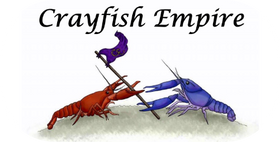General Instructions on Calcium Carbonate Dosing
Calcium Carbonate
Informational Slip
Created for Informational Purposes Only — Research Independently Prior to Adjusting Water Chemistry or Adding to Diets
“Limestone”
CaCO3 — Calcium Carbonate — Calcite
Dosing in Aquarium Help: Always research independently prior to dosing. This information is to steer you in the right direction. Read the pamphlets that come with test kits, make sure you have the right test kit, and dose slowly and appropriately. Every Species has different hardness requirements. Snail/Shrimp cohab tanks can conflict.
- Always test your water hardness prior to dosing. Make sure that you do actually need to adjust your water’s parameters. In many cases, especially in cities, the water hardness is hard already.
- Suggested mystery snail hardness recommendations from AquariumBreeder.com for informational purposes only: kH (8 is suggested) 3-18; gH 7-18
- Raising your KH may result in a spike in pH. Very few organisms have evolved to handle spikes in pH. Adjust SLOWLY.
- 1-2 teaspoons of calcium carbonate per 50L will raise both KH and GH. If your KH doesn’t rise, acids in the water may have eaten away at the miniscule amount of KH that was present. Adjust SLOWLY.
Calcium Carbonate from Crayfish Empire is sourced from a quarry that mines calcite for feed purposes. In-house quality control measures within the quarry usually tests purity at 99% CaCO3, the majority of the remainder being silica. Trace metals are detected in miniscule amounts. 7/24/2021
Snello:
- Add a heaping tablespoon, or about an ounce by mass (29g ish) per 2lbs of finished snello.
- Example: 1 Ounce of calcium carbonate would accommodate: 8oz veggies, 8oz dry ingredients, 2 cups (16fl oz) of gelatin water.
- Remember this is to supplement calcium dietary needs. It is a rock. It itself is not a food item.
Adjusting Water Chemistry:
- Do not guess. Do not dose without having a test kit and knowledge to understand readings, set appropriate goals, and responsibly adjust water parameters using calcium carbonate. Research prior to adjusting water chemistry. Measurements below are for informational purposes only.
- (https://users.cs.duke.edu/~narten/faq/chemistry.html) “To raise both GH and KH simultaneously, add calcium carbonate (CaCO3). Two teaspoons per 50 Liters of water will increase both the KH and GH by about 4 dH.” 4 degrees can be a big jump for certain species. Beware of fast changes- Potentially fatal.
- Other informational sources advise one teaspoon per 50 Liters of water for a change of 4 dH.
- 50 L —> 13.2 US Gallons, 10.9 Imperial Gallons
- Note that as your KH goes up, your pH level may go up. Adjusting any water chemistry requires finesse, stability, and consistency. Spikes or plummets in KH, GH, or pH can easily result in death or knock immune systems down to permit illness to take over.
Specific Reptile Diets:
- Every species is different. Always research for exactly what they need. Many species that require a non-vitamin D supplemented source of calcium usually ingest it via foods that have been lightly powdered in it.
- Always research what your reptile needs. Every species has different needs, and each individual will have their own needs based on genetics or (if applicable) diseases.
Isopods and other Insects:
- Use as directed by experts in the specific isopod’s industry. pH changes of substrate can be detrimental to sensitive colonies.
